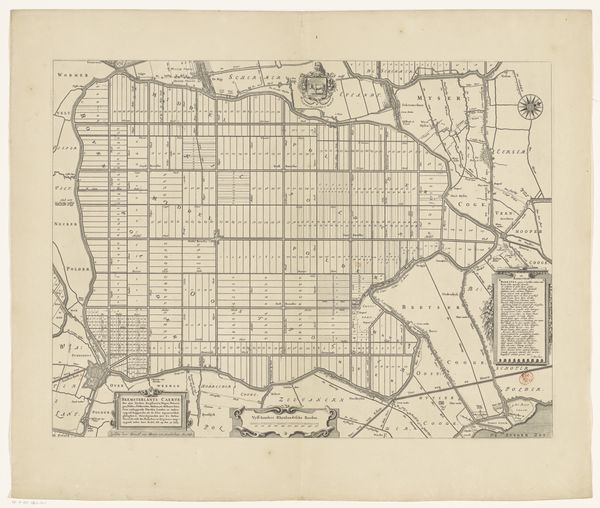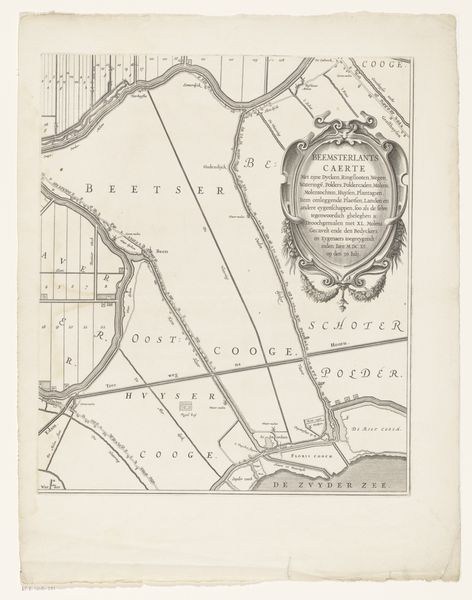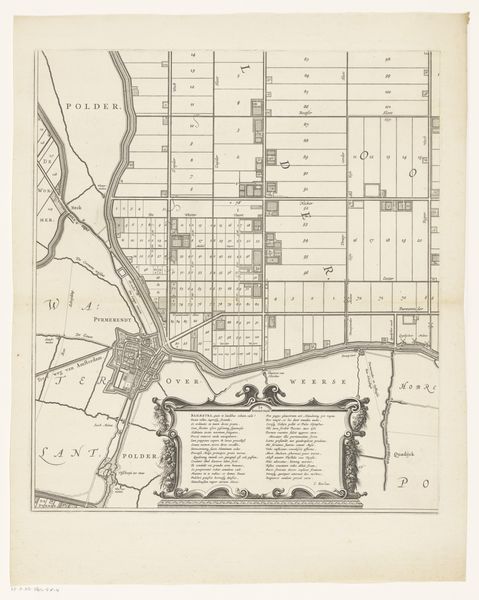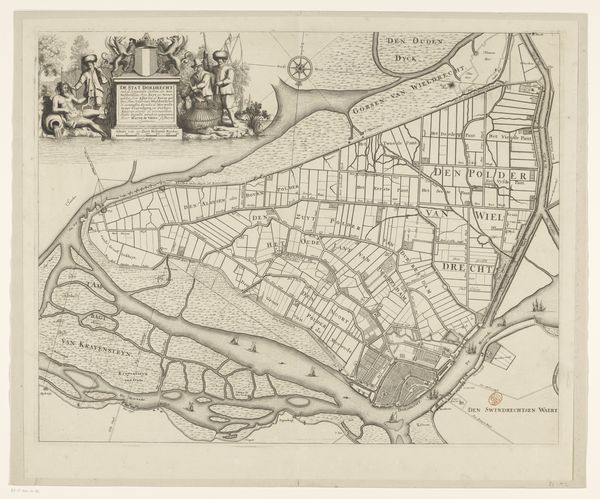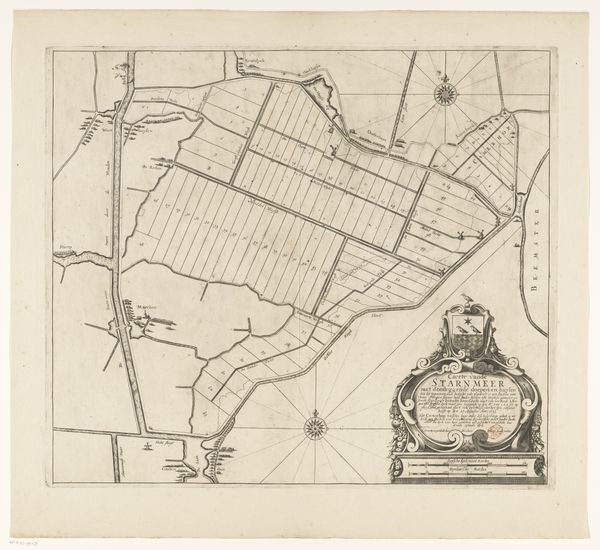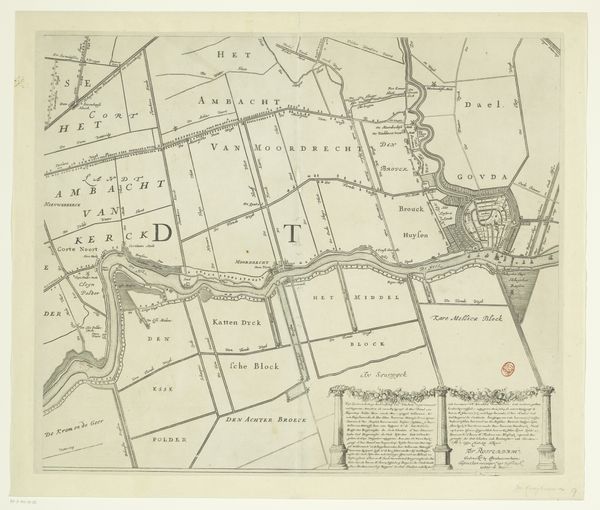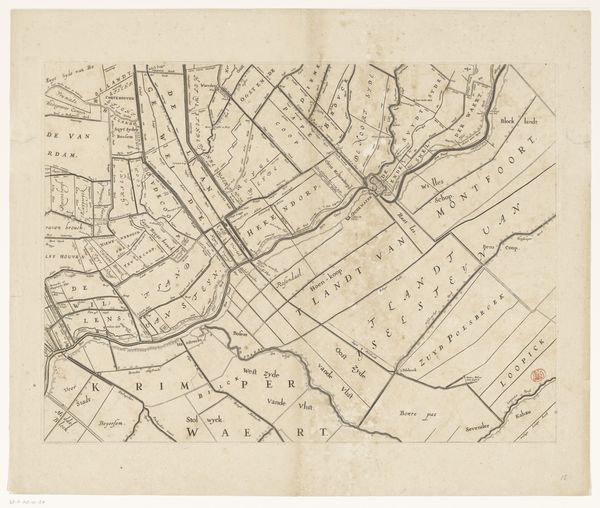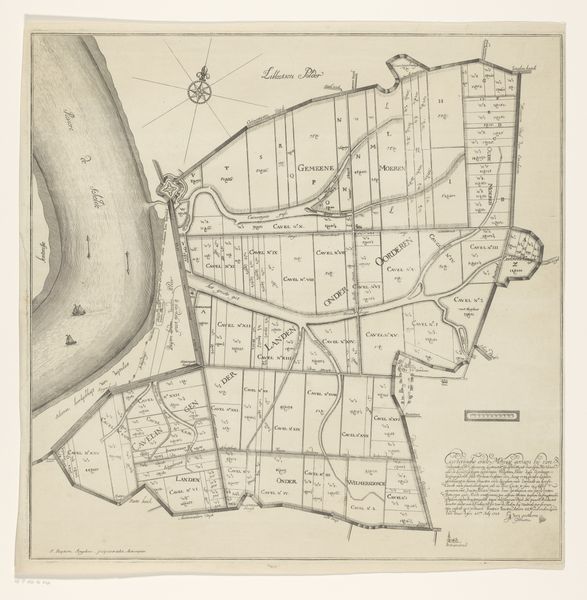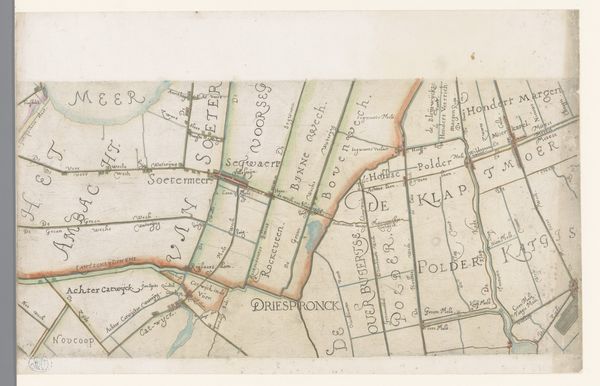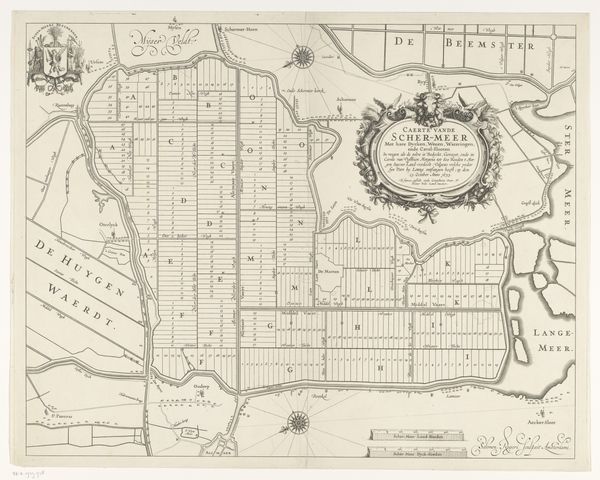
drawing, etching
#
drawing
#
dutch-golden-age
#
etching
#
landscape
#
etching
#
geometric
#
geometric-abstraction
#
architectural drawing
Dimensions: height 159 mm, width 230 mm
Copyright: Rijks Museum: Open Domain
Curator: This etching, “Kaart van de Beemster,” whose creation is placed sometime between 1635 and 1696, presents us with a fascinating perspective on landscape. It's held here at the Rijksmuseum. Editor: My first thought is order. An almost unsettling level of order! The grid structure dominates; it feels like an attempt to tame nature, turning it into a series of neat, manageable plots. Curator: Precisely! The Beemster was one of the first large-scale polders reclaimed in the Netherlands. This map isn't just a representation; it's a document of ambitious engineering, of human intervention shaping the land for economic and political gain. We can see how land ownership and societal structure are manifested through this new, rational space. Editor: The grid itself feels almost symbolic. It speaks to a Dutch Golden Age mindset – rationality, control, prosperity carved out of what was once water. The precise lines and geometric forms have an almost Platonic feel to them; they stand as an ideal for an ordered existence. I wonder if the Beemster came to be a signifier of the entire nation’s ambitions and spirit. Curator: Certainly. The Beemster became a potent symbol, showcasing Dutch innovation and industriousness. This map then serves not just as a functional tool, but also as a form of propaganda, emphasizing national pride. The very act of mapping was also an exercise in power. Editor: Are there any elements here that soften the rigid geometry, offering a visual counterpoint or further symbolism? Curator: Notice the compass rose. While part of the navigational apparatus of map making, the way it’s drawn gives the impression of nature reasserting itself, despite the overwhelming imposition of order. Editor: It’s subtle, but effective. A gentle reminder that even in the face of grand designs, nature’s influence persists, leaving an opportunity for contemplation. The Kaart van de Beemster then serves not only as record of human modification but an invitation to reflect on humanity's relationship with the world we inhabit. Curator: Indeed. It gives an historical context to a social phenomenon of its age and invites consideration of its contemporary impacts and lingering sentiments.
Comments
No comments
Be the first to comment and join the conversation on the ultimate creative platform.


